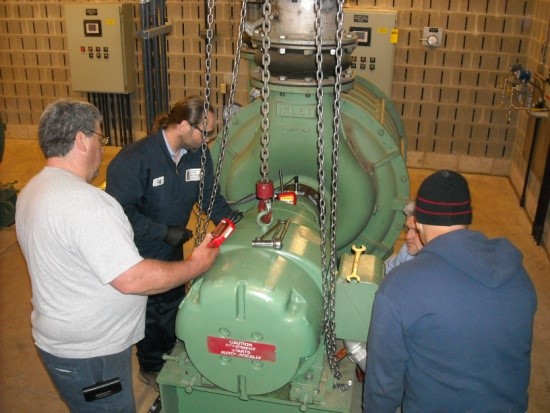Stan Riddle – VibrAlign
Two common alignment problems are when the machine is:
- Base Bound-motor cannot be lowered enough to achieve coupling alignment.
- Bolt Bound-motor cannot be moved horizontally to achieve coupling alignment.
| The most logical method to prevent a Base Bound or Bolt Bound condition is to properly install the stationary and movable machines before any piping, duct work, or other attachments are made. Bear in mind that just because a machine is shipped on a skid assembled does not mean the alignment is suitable (it probably isn’t!). Even on machines that are shipped in an aligned condition, changes can occur during shipping, or while the machine is bolted to a foundation or machine base. This can cause BBBB problems. |
Here are some common sense guidelines for minimizing the chance of these conditions.
- If you receive a skid-mounted machine, set it down in the shop, remove the guard, and check the alignment before ANYTHING ELSE is done to it. If it is within your alignment tolerance, tag it as “ALIGNED”.
- If it is not in alignment as received, align it. This way, both machines can be moved to ensure adequate alignment before installation.
- To eliminate the risk of a Bolt Bound condition:
- Loosen hold down bolts in both the stationary and movable machines.
- Push both machines in the same direction as far as the hold down bolts will allow them to go. Mark the feet positions with a marker.
- Push both machines in the opposite direction as far as they will go, and mark again.
- Position both machines mid-way between the marks and bolt down.
- Perform a rough-in process and align the movable machine to the stationary machine.
- To eliminate the risk of a Base Bound condition, install shims under each stationary machine foot to raise the height of the stationary machine higher than the moveable machine.
- Alignment should be re-checked after being bolted down and piped up, or after other accessories are installed. If pipe, duct, or conduit strain moves either machine, it is better to re-align now than after the machine is put into service.
- In addition, if the machine is mounted to a “green” or partially cured concrete or epoxy base, the alignment should be rechecked after 90 days, to confirm that alignment is still within tolerance.
- In addition, store the alignment data each time the machine is checked. This way, you will have conclusive proof that the alignment might have been changed sometime after installation process.




